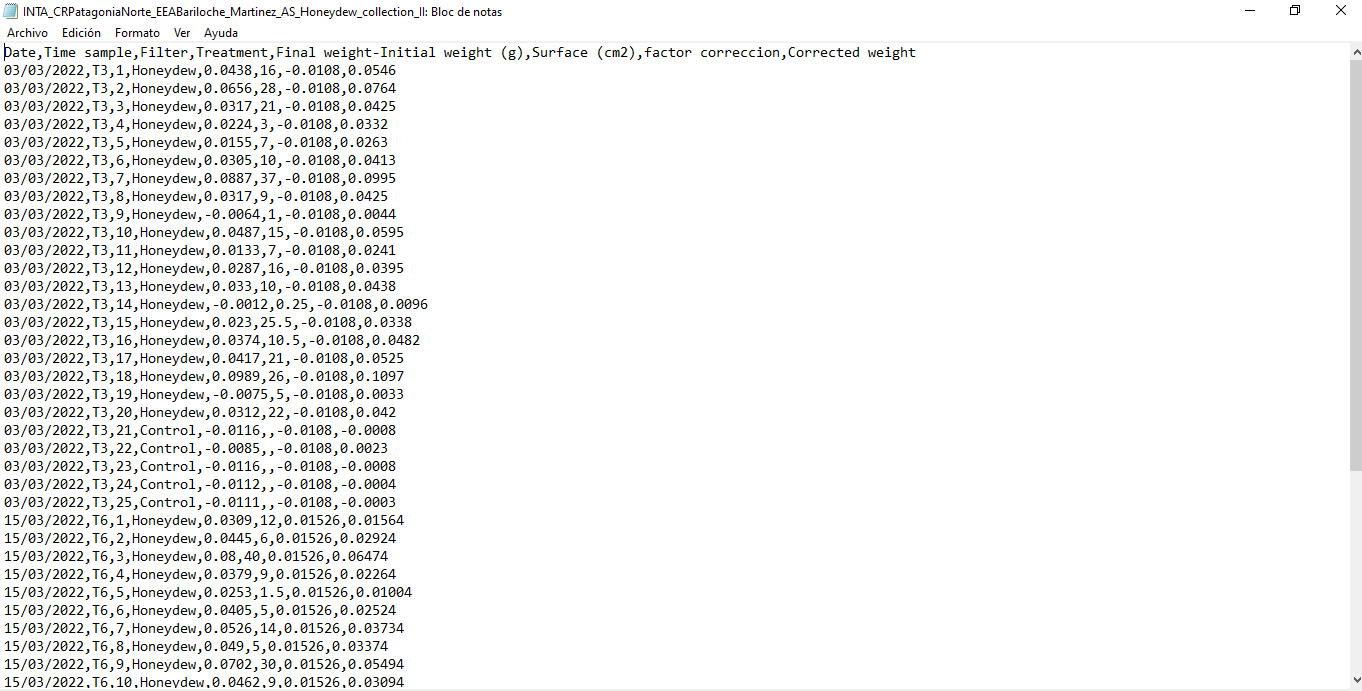Ver ítem
- xmlui.general.dspace_homeCentros Regionales y EEAsCentro Regional Patagonia NorteEEA BarilocheConjunto de datosxmlui.ArtifactBrowser.ItemViewer.trail
- Inicio
- Centros Regionales y EEAs
- Centro Regional Patagonia Norte
- EEA Bariloche
- Conjunto de datos
- Ver ítem
Supplementary dataset to "Honeydew production by the Giant Willow Aphid (Tuberolachnus salignus, Hemiptera: Aphididae) and its effect on foraging yellowjackets (Hymenoptera: Vespidae)"
Resumen
BACKGROUND: Understanding the factors that promote the success of invasive species is important for managing biological invasions. Interactions between invasives and other species (e.g., competitors, pathogens, or predators), could favor or limit their success. In recent decades, yellowjacket wasps, including Vespula germanica and V. vulgaris, have successfully established in Patagonia. Additionally, the invasive willow Salix fragilis has also invaded
[ver mas...]
BACKGROUND: Understanding the factors that promote the success of invasive species is important for managing biological invasions. Interactions between invasives and other species (e.g., competitors, pathogens, or predators), could favor or limit their success. In recent decades, yellowjacket wasps, including Vespula germanica and V. vulgaris, have successfully established in Patagonia. Additionally, the invasive willow Salix fragilis has also invaded areas next to watercourses, which in turn are typically colonized by the giant willow aphid (GWA, Tuberolagnus salignus), an additional species characterized as a successful invader in many regions worldwide. Aphid exudate (honeydew) has been reported to be used as a carbohydrate source by social wasps. The aim of our study was to gain a better understanding of the infestation pattern of the GWA in northwestern Patagonia, its effect on exudate availability and its relationship with yellowjacket foraging patterns. The study was conducted under the working hypothesis that the increase in the size of GWA colonies and resulting honeydew production, will fuel an increase in local Vespula spp. populations.
[Cerrar]

Autor
Descripción
This study was financed by project BID PICT 2018-0657 provided by the “Agencia Nacional de Promoción Científica y Tecnológica” (Argentina) to AM, project PUE 0069 2018-IFAB provided by the “Consejo Nacional de Investigaciones Científicas y Técnicas” and project 2019-PE-E1-I017-001.P14 and project 2019-PD-E4-I079-001 provided by the “Instituto Nacional de Tecnología Agropecuaria”
Fecha
2022
Documentos Relacionados
Formato
text/csv
Tipo de documento
conjunto de datos
Proyectos
(ver más)
INTA/2019-PE-E1-I017-001/2019-PE-E1-I017-001/AR./DESARROLLO DEL SECTOR APÍCOLA ORGANIZADO, SUSTENTABLE Y COMPETITIVO
INTA/2019-PD-E4-I079-001/2019-PD-E4-I079-001/AR./Genética, genómica y ecología de insectos de importancia agronómica como insumo para el desarrollo de estrategias sustentables de control plagas
Palabras Claves
Derechos de acceso
Abierto
 Excepto donde se diga explicitamente, este item se publica bajo la siguiente descripción: Creative Commons Attribution-NonCommercial-ShareAlike 2.5 Unported (CC BY-NC-SA 2.5)
Excepto donde se diga explicitamente, este item se publica bajo la siguiente descripción: Creative Commons Attribution-NonCommercial-ShareAlike 2.5 Unported (CC BY-NC-SA 2.5)


